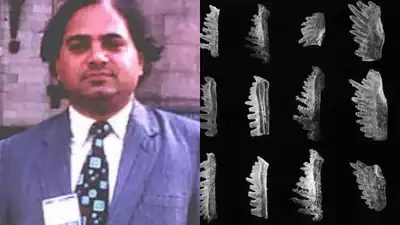- News
- Science News
- This Indian scientist behind ‘The Himalayan Fossil Hoax’ has fooled the world for 30 years - know how
This Indian scientist behind ‘The Himalayan Fossil Hoax’ has fooled the world for 30 years - know how
Vishwajit Gupta, a renowned professor at Punjab University, gained acclaim for his research in Himalayan geology and paleontology, publishing numerous papers. However, investigations revealed he fabricated data and samples, leading to one of the largest scientific frauds in history. This scandal severely impacted the prestige of paleontology in India and led to Gupta's suspension and conviction.
Professor Vishwajit Gupta of Panjab University, Chandigarh, earned widespread acclaim during the 1970s and 1980s as a leading specialist in Himalayan geological formations and the fossil record. His continuous study in both fields brought him significant recognition—until it was discovered that Gupta was responsible for one of paleontology’s most elaborate scientific frauds. What initially appeared to be groundbreaking research eventually unraveled into one of the largest-scale cases of scientific deception in history. The “Himalayan Fossil Hoax” remains a cautionary tale about the importance of rigorous peer review, ethical conduct, and transparency in scientific research.
The rise to fame
Gupta began his career with a series of publications that quickly earned him fame. Between 1966 and 1989, he published over 450 papers and five books, earning him the title of India’s most celebrated fossil scientist. His primary focus was on fossils reportedly discovered in the Himalayan region. One of his most notable achievements was co-authoring a paper in the prestigious journal Nature, in which he reported on conodonts—small, tooth-like marine fossils previously unknown in India. This "discovery," along with a series of other high-profile publications, cemented his reputation in the scientific community.
The deceptive strategy
Collaborations and credibility
Gupta enhanced his credibility by collaborating with respected international geologists such as Frank H. T. Rhodes, R.L. Austin, and Gary Webster. Their association with him lent credibility to his work, allowing his dubious findings to be accepted by the wider scientific community with little scrutiny. This made it even more difficult for critics to question his assertions.
Though his reputation soared, some Indian scientists harbored doubts. In 1978, geologists S.V. Srikantia, H.M. Kapoor, and S.K. Shah expressed concerns about the validity of Gupta's findings. In 1981, P.N. Agarwal openly challenged the authenticity of Gupta’s conodont discoveries in the Journal of the Palaeontological Society of India. At the time, however, such skepticism was largely ignored.
The unraveling of the hoax
The first major challenge to Gupta’s credibility came in 1980, when Prem N. Agarwal and S.N. Singh of Lucknow University conducted a detailed examination of his work. They discovered numerous inconsistencies—fossils said to have come from specific sites were not referenced in subsequent publications, and site details often didn’t match. The discrepancies were too significant to be dismissed as errors, pointing instead to deliberate fabrication.
In 1987, Australian geologists John Talent and Glenn Anthony Brock initiated a thorough re-evaluation of Gupta’s research. They found over a hundred instances of fraudulent fossil claims. Talent presented his findings at the International Symposium on the Devonian System in Calgary, Canada, and later published a 50-page exposé in Courier Forschungsinstitut Senckenberg, a respected journal in earth sciences. Their investigation concluded that Gupta’s fossil samples were likely purchased, stolen, or received as gifts—not collected from the Himalayas, as he had claimed.
The aftermath
Following the exposure, Gupta faced significant professional repercussions. Panjab University suspended him in 1991, and in 1993, the University Grants Commission withdrew the "Centre of Advanced Study in Palaeontology and Himalayan Geology" status from his department. In a 1994 court case, Gupta was found guilty of data manipulation, plagiarism, and fabricating research sites. Despite this, no formal retractions were issued for his fraudulent papers, and he was never held legally accountable.
In a 2021 Science magazine article, Indian science journalist Sanjay Kumar argued that the scandal significantly tarnished the reputation of paleontology in India, a field that had once been on the verge of global recognition. Remarkably, Gupta retained his academic degrees, and his pension remained unaffected.
Vishwajit Gupta passed away on December 31, 2022, leaving behind a legacy irreversibly marked by scientific fraud.
Read Also | Why Marie Curie’s coffin lined with lead and still remains radioactive even after 100 years

About the Author
TOI Science DeskEnd of Article
FOLLOW US ON SOCIAL MEDIA

